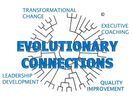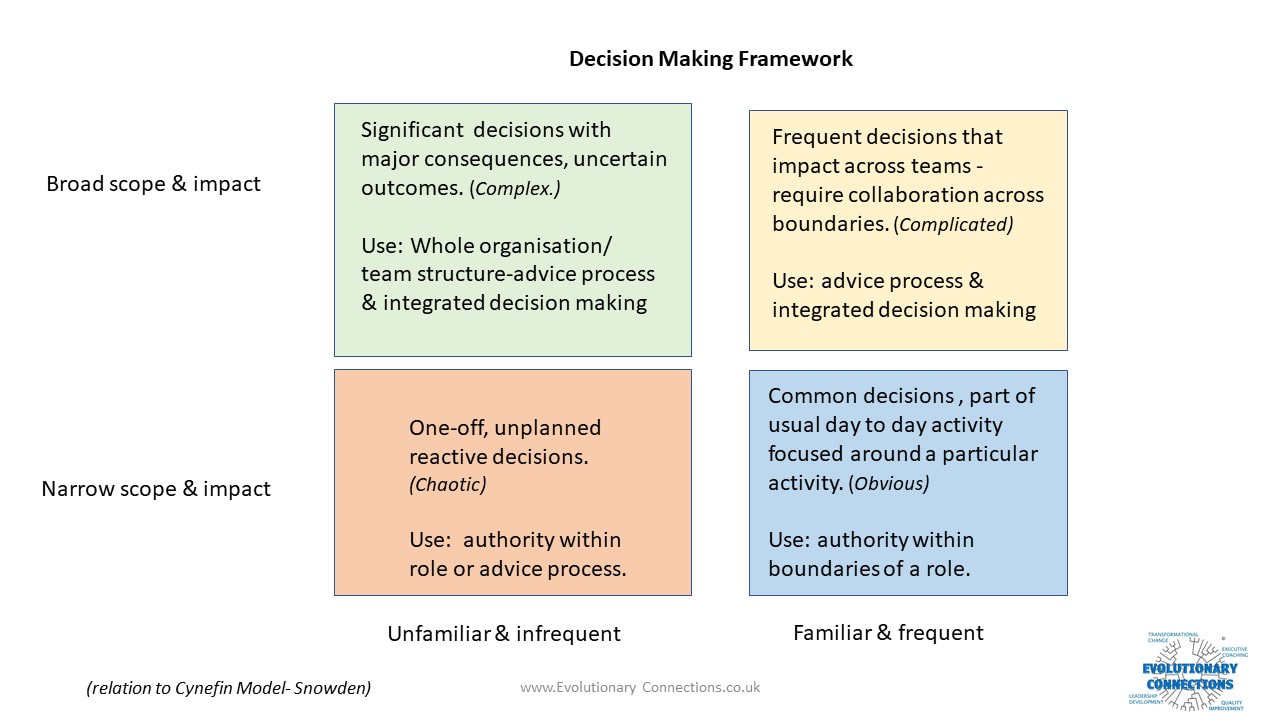|
www.evolutionaryconnections.co.uk
Working with organisations to create new ways of working which enhance autonomy, mastery and meaning; one of the areas that causes most anxiety is decision making. Although the current decision-making structures and processes are often not working, there is a comfort in the system we know, however flawed. When we think about changing the system people worry that they won’t make good decisions while others worry that handing over decision making will lead to chaos and disaster. Once we recognise and own the emotions that are connected to this task, we can put them to work. A decision audit is often a good place to start, coupled with an amnesty that recognises what we set out as the process or structure and what actually happens are likely to be two very different things.
Although we know it isn’t working; when we see the number of sign offs and handoffs, recognise the pseudo- delegations that are really “you decide but only if I agree” and track the decisions that are being taken by the wrong people in the wrong place at the wrong time; it can be a shock. It is also common to find organisations that are not clear about how decisions get made. Decisions are made by whoever happens to be there, at the time they need to be made with whatever information happens to be to hand. Sometimes unforeseen circumstances require this type of decision making but these situations should be few and far between. When we appreciate what is really happening in our current system, we can easily locate the reasons behind the tensions and conflicts, the confusions that lead to mistakes and inefficiencies and the frustrations that lead to disengagement and poor-quality work. Following a decision audit, we can identify what sort of decisions we require and locate decisions within roles, teams and processes. Designing a good enough to try and safe enough to fail system enables the organisation to make a smooth transition and design in processes that require the design to be reviewed and improved as the new way of working matures. I designed this Decisions Making Framework to help organisations recognise the type of decisions they are making and locate them in the most appropriate place in their design. If you would like more information or support to enable your organisation to make this transition and achieve better decision making, please don’t hesitate to contact me. Comments are closed.
|
AuthorJane Pightling has experience across the public, private and charitable sector. Through her work in the NHS Leadership Academy and her consultancy Evolutionary Connections she developed complex systems leadership capacity, providing training, coaching programmes and establishing networks and communities of practice to sustain learning. She maintains her social work registration and her commitment to person centred and community focused approaches. Jane has a deep interest in the potential offered by new ways of working, designing and building organisations and communities that can best deliver this kind of service. She works with organisations and leaders to develop approaches that design in autonomy, wholeness and purpose. Archives
October 2021
Categories
All
|



 RSS Feed
RSS Feed